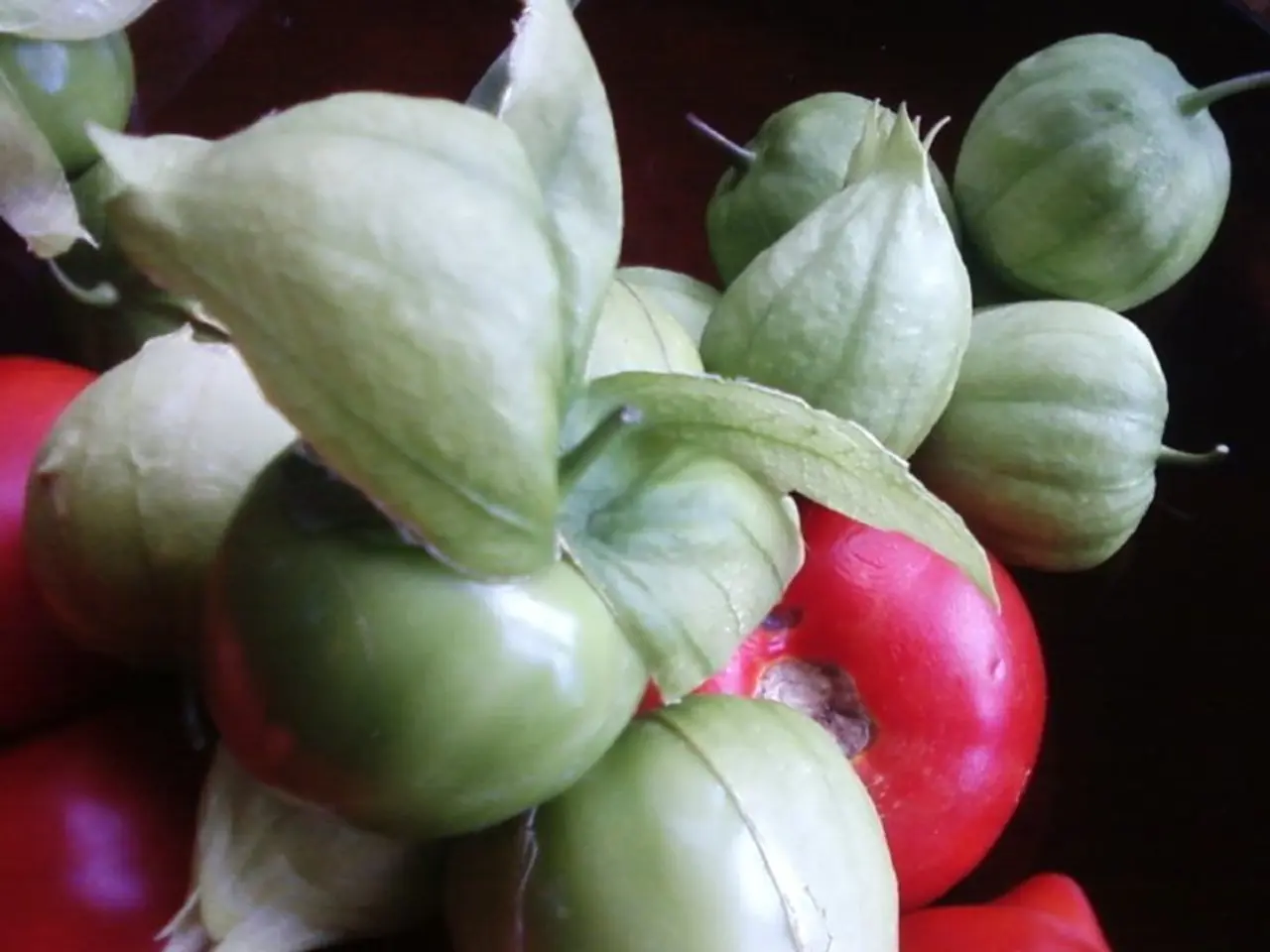Grow Vegetables Vertically on a Fence: Discover the Top 8 Varieties for Maximum Growth and Space-Saving Advantages
From cucumbers to snow peas, various vegetables and herbs can thrive in vertical gardens, offering a space-saving solution for urban dwellers and garden enthusiasts alike. Here's a guide to growing your favourite produce on fences using different vertical gardening structures.
Cucumbers, snow peas, and even tomatoes can be grown vertically, with each requiring sturdy support due to their size. For instance, growing cucumbers on a mesh fence allows exposure to sun on both sides, promoting fruit maturity. Snow pea vines produce twining tendrils that help the plant ascend without much training.
Melons can also be grown vertically, but they require more space and support due to their size. Pantyhose, netting, fabric, and even used face masks can be used to support smaller melon fruits. Larger varieties like Honeybun, cantaloupe, Sprite, Minnesota Midget, and Kazakh are suitable for vertical gardening, as are Mexican sour gherkins, or cucamelons, an interesting variety to grow for vertical gardening.
Many herbs such as thyme, mint, oregano, cilantro, basil, and more can grow together in vertical planters. Herbs can be grown in an attractive hanging container situation near the kitchen door or in a grow wall with Red leaf, spinach, sorrel, arugula, Swiss chard, and other greens. Lettuces and leafy greens can be grown vertically, especially in smaller individual plants with their own housing.
Different vertical gardening structures suitable for growing vegetables on a fence include trellises and arbors, wire mesh or fencing, vertical garden panels or modular planters, pallet planters, gutter gardens, hanging pots or planters, and frames made from bamboo or wood.
Trellises and arbors are classic vertical supports designed specifically for climbing vegetables such as tomatoes, cucumbers, beans, and peas. Wire mesh or chicken wire panels attached directly onto a fence create a convenient climbing grid for vining vegetables. Vertical garden panels or modular planters are lightweight, wall-mounted panels with individual pockets or slots that can be mounted onto fences.
Repurposed wooden pallets fixed to a fence can serve as shelves or plant holders, perfect for smaller vegetables and herbs. Upcycled gutters attached horizontally to a fence serve as long, slim planters suitable for shallow-rooted vegetables like lettuce, radishes, or herbs. Hanging pots or planters create a tiered vertical garden, suitable for container-friendly vegetables such as cherry tomatoes, peppers, or herbs.
Constructing simple wooden or bamboo frames and attaching them to the fence offers a sturdy structure for vines to climb or for suspending pots. Secure installation is critical so the structure supports the weight of plants and soil. Adequate drainage and irrigation (drip or self-watering systems) benefit plant health in vertical setups. Arranging plants by height and light requirements maximizes space and growth efficiency.
These structures vary by complexity and cost, from simple wire mesh to integrated living wall panels, allowing for tailored vertical vegetable gardening on fences for nearly any space and budget. Zucchini, such as the Spineless Beauty hybrid, can also be grown vertically on fences or other structures with appropriate support. Tomatoes benefit from staking and training to keep the fruit from touching the ground and to introduce maximum sunlight and air. Runner beans produce long vines and traditionally grow on trellises or teepees, requiring more training than snow peas. Tromboncino is a newer climbing zucchini that performs well on an upright structure.
With these vertical gardening options, you can transform your fence into a thriving vegetable patch, saving space and enjoying fresh produce right at your doorstep.
Incorporating home-and-garden pursuits into one's lifestyle, various vegetables like cucumbers, tomatoes, and melons, as well as certain herbs such as basil, thyme, and cilantro, can be grown vertically to optimize space in urban settings. With appropriate vertical gardening structures like trellises, wire mesh, pallet planters, and hanging pots, one can create a home-and-garden paradise by growing a variety of plants right on their home's fences.




